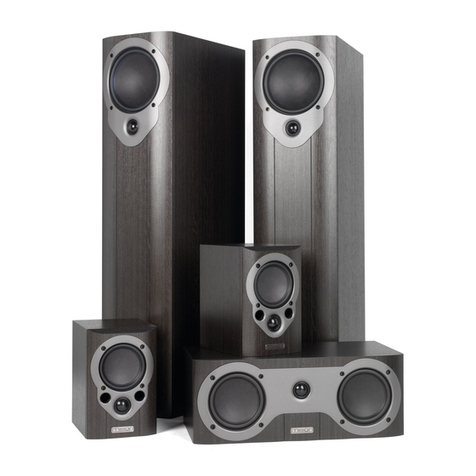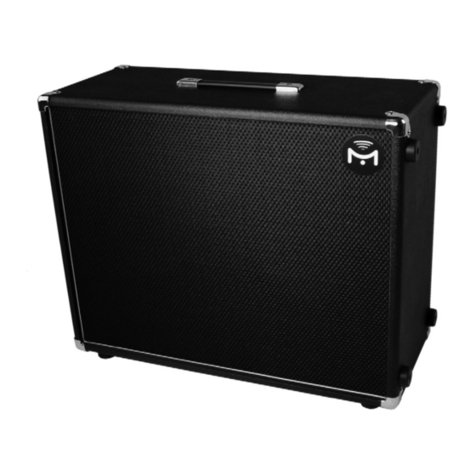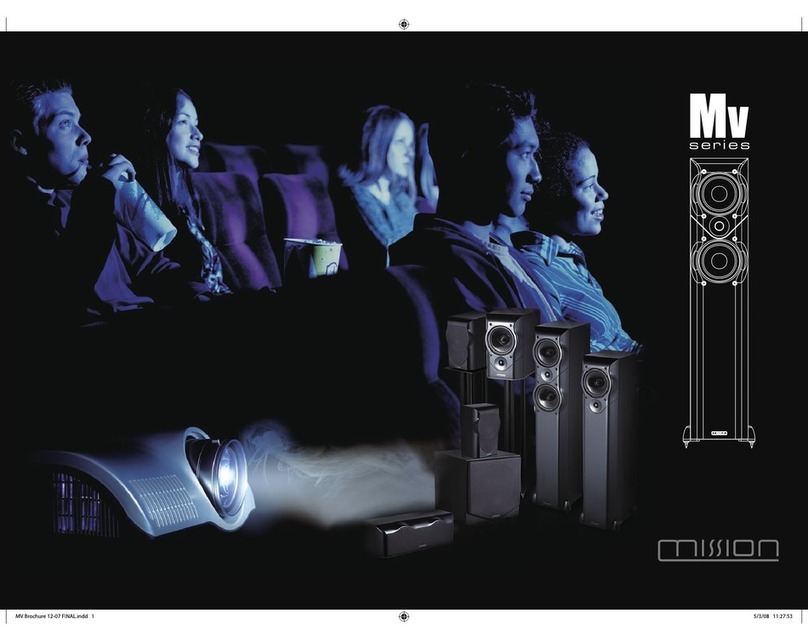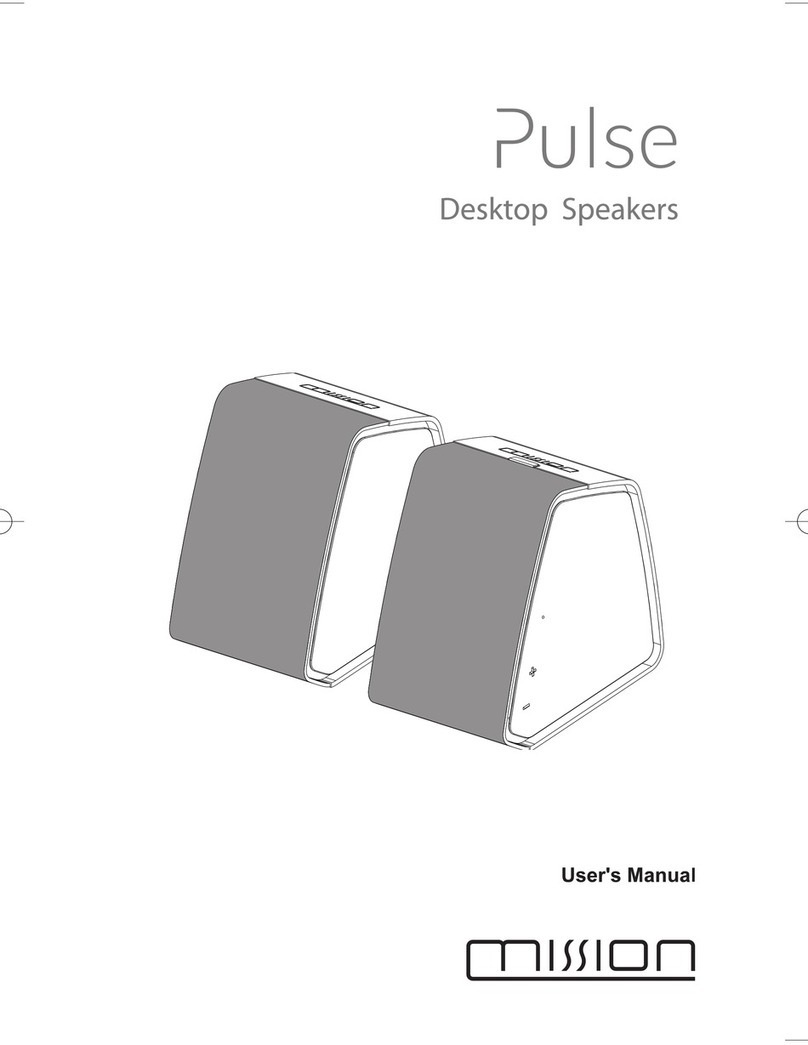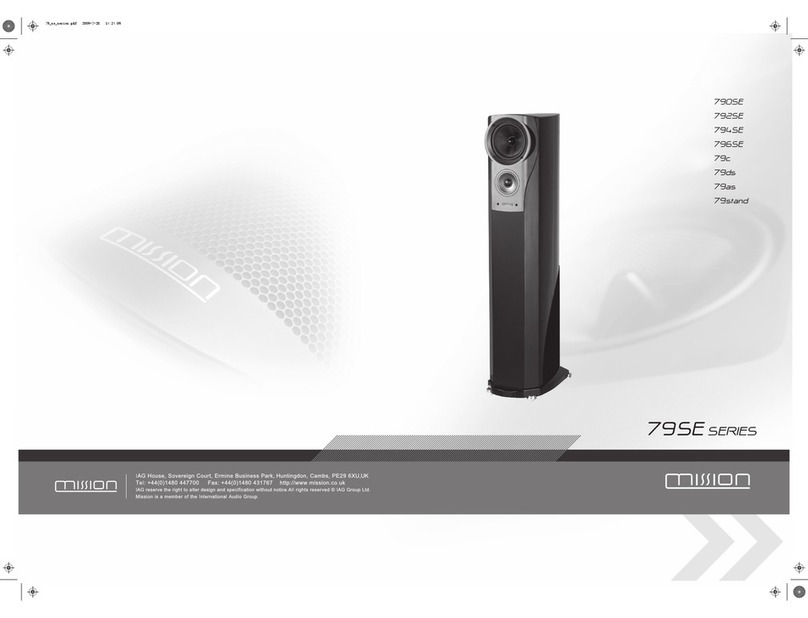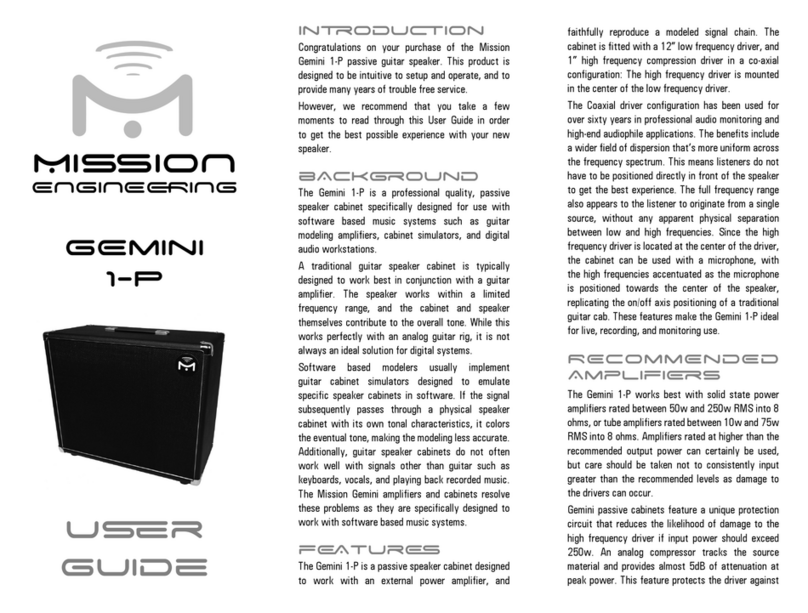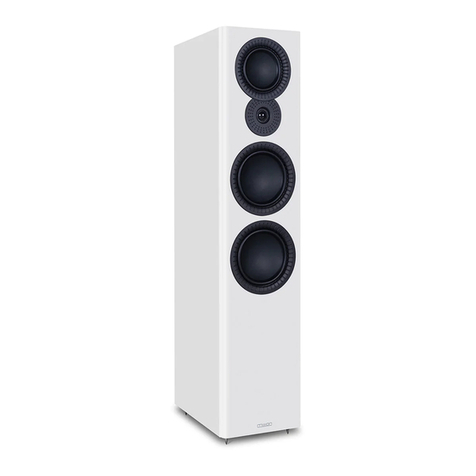
Loudspeaker Instruction Manual English ‘
TECHNICAL SECTION range differential. Nearly all hi-fi systems compress the dynamics
of live music -not so with MISSION. High dynamic reproduction of
Most people do not associate loudspeakers with complex music has become the company's signature. Indeed, this is
technology. But in reality, of all the components in the audio recognised by reviewers and commentators throughout the world
reproduction chain the loudspeaker proves the most difficult to in their repeated references to MlSSlON's ability to achieve
design. The role of the loudspeaker is an intricate one, in that the exceptional realism.
transducer is required to transform electrical energy into Lin mofthe owerres onse withinthed namic,wind0w.ma
ea YppYY
"!,:eChan'Ca| energy‘ This C°mP'eX'.t'e;f°ft|?'s processf gjgethergtgnh be even more important than the dynamic range itself MISSION
Iesubef nature °m“S'Cd'}t1s i‘%Yfd9'eae °°uiCt.ss systems preserve power response linearity throughout the wide
controversies over the years an ave res ein many con mg
....i||
design philosophies As aresult listeners can discern marked d¥;:eT\'/fnranggiita ;tV¥kn§lérJ3e;‘:F|);3g:gCt'°n oargetrangems whne
differences between various models. Different designers pgq Y
emphasise different aspects of the loudspeakers characteristics. COLORA-HON Bterm widely used to describe 3multitude of
Forexample, some loudspeakers offer high efficiency to tedl-stem-ans and other aberrations which occur in
detriment of accuracy, others produce smoothness and low lauds eakers
coloration but fail to generate adequate sound levels and musical P
dynamics; many impress on initial listening but in the long term Avariety of complex ‘steady-state‘ and dynamic distortions lead to
produce fatigue and become irritating. inaowcurateband unrealisliqtic reproduction of music. Subjective terms
suc as 'oxiness', 'c estiness', 'nasality', 'honk ness‘, etc. are
L°udspeakerType generally used to describe such colorations. Coioration is often
Once, people bought loudspeakers on the principle of ‘the bigger defined as ‘additive distortion‘ but at MISSION we go further and
the better‘. The same people were equally impressed by acontend that negative distortions can also exist. This occurs in the
multitude ofdrive units, control knobs and other harmful gimmicks. case of low dynamic systems with poor information retrieval
But things have moved on and today most people know better. capabilities. In such cases the lost information cannot, obviously,
-.-suffer distortion! We call this ‘subtractive distortion’. The new
MISSION loudspeakers are elegant compact efficient high power WSSION buds eakers are so exce tiona| in ‘ems of Iow
--'‘~ '- PP
hand|'n9' fu" range’ h'9h peormanife deigfgs wmch are io distortion that they are approaching amplifier specifications!
ggxinced that may Wm nm be out pe orme rmany years OMISSION enclosures are precision designed and visco-elastically
'damped to reduce unwanted acoustic output from the cabinet
. . . . . walls and eliminate internal standing waves. The driver
DYNAMK; RANGE '""5 We dene .35 "7? dferefmal deubels membranes are made of special and rather unusual materials
between the least audible musical information and the I-.--'
loudest attainable transients, while they are simultaneously ;"a“{‘¥e[‘:‘1'cfi*ti<:'la€:hE;r°t?i‘|‘(; :<é“in"g€Lll;n:F;?‘1‘é?mq"Egio¥1?;ya::a9'gér;Tjw
present‘ optimised. These drivers are inherently very smooth, have highly
Dynamic range is perhaps the single most important parameter of controlled break-up modes and minimal other resonances.
concern to our designers. Also, it is not acoincidence that the An Yto data“ extends to the anal -fIt-
greatest difference between live and recorded music IS in dynamic invgmg drive Unit dismacemems measureg?1Sm:ro:gf?|-éaégcz
